Eastern Deer Mouse
- December 19, 2023
- 0 comment
The Eastern Deer Mouse (Peromyscus maniculatus) is a small rodent that belongs to the family Cricetidae. Found predominantly in North America, this species is known for its adaptability and resilience in various environments, ranging from forests and grasslands to deserts. Identified by its distinctive bi-colored tail, which is dark on top and light underneath, the Eastern Deer Mouse typically measures between 5 to 8 inches in length, including its tail. Its fur coloration varies, ranging from reddish-brown to gray, providing effective camouflage in its natural habitat.
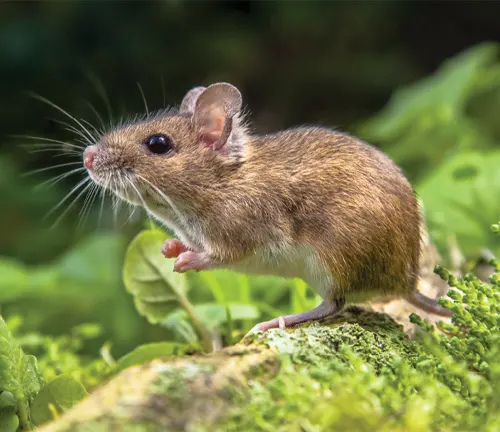
Conflicts involving Eastern Deer Mice often arise due to their tendency to inhabit human structures such as homes and agricultural buildings. These rodents are known to be carriers of diseases, posing potential health risks to humans through the transmission of hantavirus and Lyme disease. Consequently, effective identification is crucial for proper management and control measures. These mice can be distinguished by their large eyes, prominent ears, and a pointed snout.
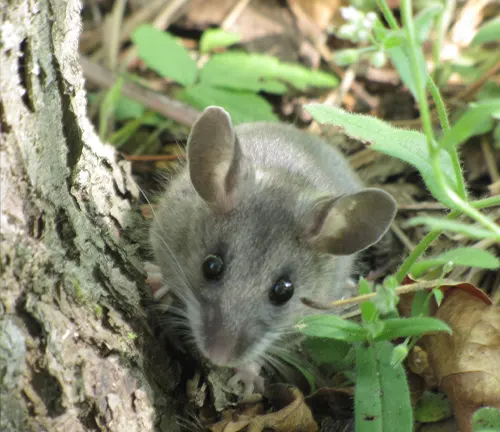
In terms of legal status, Eastern Deer Mice may be subject to regulations depending on local wildlife conservation laws. Given their association with disease transmission, public health authorities often implement measures to control their populations in areas where human-mouse interactions pose a threat. Understanding the legal framework surrounding these rodents is essential for implementing humane and effective control strategies.
The species range of the Eastern Deer Mouse spans a wide geographical area, encompassing North America from the Arctic Circle to the southern United States. Their adaptability to diverse ecosystems contributes to their widespread distribution. However, the expansion of human settlements and altered landscapes can intensify conflicts, leading to increased efforts for mitigation and management.
Health and safety concerns associated with Eastern Deer Mice primarily revolve around the potential transmission of diseases. Hantavirus, in particular, is a notable threat, with cases of human infection reported through contact with mouse droppings, urine, or saliva. Proper sanitation practices, rodent-proofing structures, and awareness campaigns are crucial components of efforts to mitigate health risks associated with Eastern Deer Mice.
| Aspect | Details |
|---|---|
| Scientific Name | Peromyscus maniculatus |
| Family | Cricetidae |
| Length | 5 to 8 inches (including tail) |
| Tail Characteristics | Bi-colored (dark on top, light underneath) |
| Fur Coloration | Reddish-brown to gray |
| Distinctive Features | Large eyes, prominent ears, pointed snout |
| Habitat | Forests, grasslands, deserts |
| Geographical Range | North America (Arctic Circle to southern U.S.) |
| Human Conflicts | Inhabits human structures, potential disease transmission |
| Diseases Carried | Hantavirus, Lyme disease |
| Legal Status | Subject to wildlife conservation laws |
| Management Strategies | Rodent-proofing, sanitation, public awareness |
General Biology of the Eastern Deer Mouse
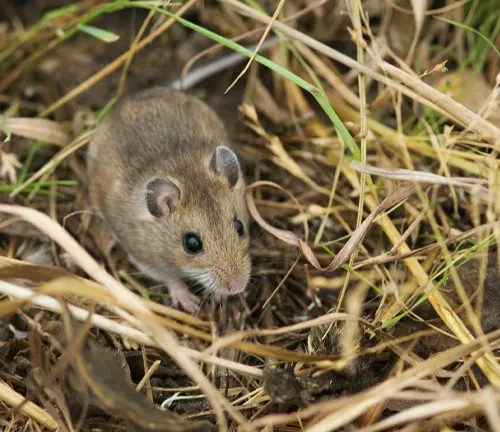
The Eastern Deer Mouse, scientifically known as Peromyscus maniculatus, is a fascinating rodent species that belongs to the family Cricetidae. These small mammals, typically measuring between 5 to 8 inches in length (including their tails), are renowned for their adaptability and resilience in various North American habitats. Their fur coloration ranges from reddish-brown to gray, providing effective camouflage in their natural environments. With distinctive bi-colored tails, large eyes, prominent ears, and a pointed snout, Eastern Deer Mice are easily identifiable.
Reproduction
Reproduction is a vital aspect of the Eastern Deer Mouse’s life cycle. These rodents exhibit a remarkable ability to breed throughout the year, with peak activity occurring during the spring and summer months. Female Eastern Deer Mice are capable of having multiple litters annually, with an average litter size ranging from 2 to 7 pups. The young mice mature quickly, reaching sexual maturity within a few months, contributing to the species’ population dynamics.

Behavior
The behavior of Eastern Deer Mice is characterized by their nocturnal and solitary nature. These rodents are adept climbers and are known for their agility. Their diet primarily consists of seeds, nuts, fruits, and insects. Eastern Deer Mice play a crucial role in ecosystem dynamics as both predators and prey.
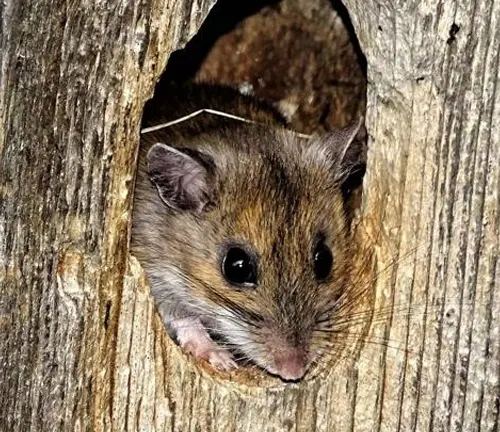
Nesting/Denning Cover
Eastern Deer Mice are skilled nest builders, constructing nests in various locations such as tree hollows, burrows, or abandoned bird nests. The choice of nesting sites is influenced by the availability of suitable cover and protection from predators. Their resourcefulness in finding secure denning locations contributes to their survival in diverse habitats.
Habitat
The habitat range of Eastern Deer Mice is extensive, covering North America from the Arctic Circle to the southern United States. These adaptable rodents thrive in diverse ecosystems, including forests, grasslands, and even deserts. Their ability to adjust to different environments makes them a resilient and widespread species.
Food Habits
Eastern Deer Mice are omnivores with a diverse diet. Their feeding habits include consuming seeds, nuts, fruits, and a variety of insects. This versatility in diet contributes to their ability to survive and thrive in different ecosystems.
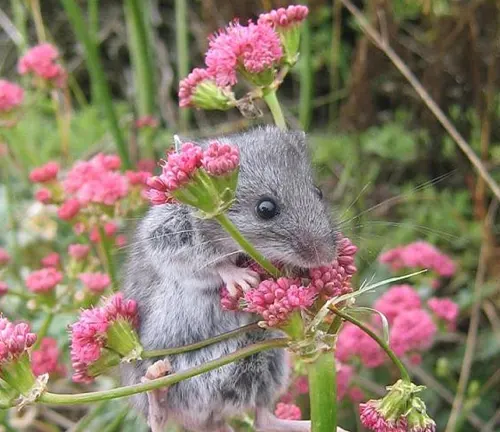
Voice, Sounds, Tracks, and Signs
While Eastern Deer Mice are generally silent, they may produce ultrasonic vocalizations that are beyond the range of human hearing. They communicate using various sounds, including squeaks and chirps. Tracks and signs of their presence can be identified through their distinctive footprints and droppings, providing valuable insights for researchers and wildlife enthusiasts.
Damage Identification by Eastern Deer Mouse
The Eastern Deer Mouse, while seemingly harmless, can pose challenges when it comes to damage identification. Understanding the specific ways in which these rodents can impact landscapes, crops, livestock, and structures is crucial for effective mitigation.
Damage to Landscapes
One area where Eastern Deer Mice can cause subtle yet noticeable damage is in landscapes. These rodents are known to burrow and create intricate tunnel systems, potentially affecting the stability of soil. Their activities may lead to erosion and soil disturbance, altering the landscape’s integrity over time. Recognizing these signs early on can aid in implementing preventive measures to safeguard the natural environment.
Damage to Crops and Livestock
Eastern Deer Mice can have a significant impact on agricultural settings. Their omnivorous diet includes seeds, fruits, and even insects, making crops vulnerable to their foraging activities. Additionally, the mice may also consume grains stored on farms, leading to economic losses for farmers. Livestock can be indirectly affected as well, as the rodents may compete for food resources and contribute to the transmission of diseases. Identifying the signs of crop damage and implementing protective measures are essential for sustainable agriculture.
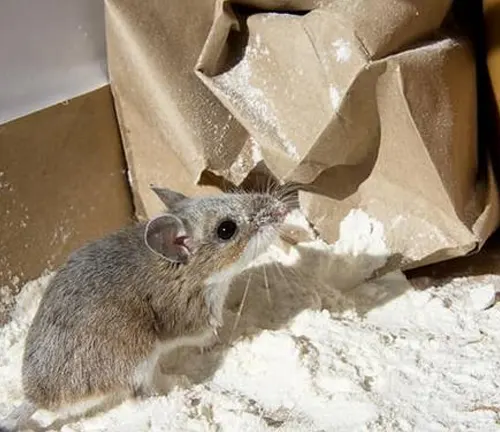
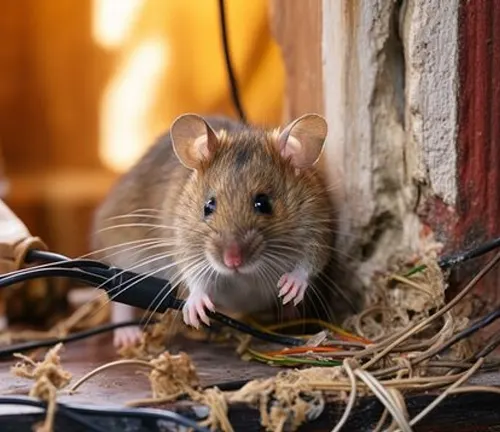
Damage to Structures
One of the more conspicuous areas of impact by Eastern Deer Mice is in and around human structures. Seeking shelter, these rodents may enter homes, barns, and other buildings, leading to structural damage. Gnawing on electrical wiring and insulation poses fire hazards and increases maintenance costs. Moreover, their presence in residential areas raises concerns about disease transmission, particularly hantavirus, emphasizing the importance of prompt identification and control measures.
Damage Prevention and Control Methods for Eastern Deer Mouse
The presence of Eastern Deer Mice can lead to various challenges, from landscape disruption to potential harm to crops, livestock, and structures. Effective damage prevention and control methods are essential to manage these situations while maintaining a balanced ecosystem.
Creating an Unwelcoming Environment
One strategic approach to control Eastern Deer Mice is habitat modification. By altering the landscape to make it less appealing, one can discourage the rodents from establishing nests and burrows. This may involve removing potential hiding spots, minimizing food sources, and creating barriers that limit their access to preferred habitats.
Keeping Eastern Deer Mice at Bay
Implementing exclusion measures is a proactive way to prevent Eastern Deer Mice from entering structures. Sealing entry points such as gaps in walls, windows, and doors can significantly reduce the likelihood of rodent infestations. Employing materials like wire mesh or steel wool in potential entryways adds an extra layer of protection against their intrusion.
Using Sound and Light to Deter Mice
Frightening devices leverage sound and light to create an environment that Eastern Deer Mice find uncomfortable. Ultrasonic devices emitting high-frequency sounds beyond human hearing and motion-activated lights are examples of non-lethal methods to discourage these rodents. While their effectiveness may vary, incorporating these devices can contribute to a comprehensive pest management strategy.
Natural and Chemical Aversions
Repellents offer another line of defense against Eastern Deer Mice. Natural options, such as peppermint oil or ammonia-soaked rags, can create an odor barrier that deters rodents. Additionally, commercial repellents containing chemical deterrents can be applied to targeted areas. Employing a combination of these methods enhances the repellent effect and increases the likelihood of success.
Controlled Use of Rodenticides
In situations where other methods prove insufficient, the controlled use of toxicants or rodenticides may be considered. It’s crucial to use these substances with caution, ensuring they are placed in areas inaccessible to children, pets, and non-target wildlife. Seeking professional advice and adhering to local regulations are imperative when considering toxicants as a control method.
Precision in Population Control
In rural settings with appropriate safety measures in place, shooting Eastern Deer Mice can be a targeted method of population control. This method requires skill and precision and is most effective when applied in conjunction with other control strategies. Safety considerations, local regulations, and ethical practices are paramount when employing this approach.
Humane and Targeted Removal
Trapping provides a humane and targeted way to remove Eastern Deer Mice from specific areas. Live traps can be employed to capture and relocate the rodents, reducing their impact without causing harm. Regular monitoring and proper disposal of captured mice are essential elements of a successful trapping strategy.
Different Species
Peromyscus maniculatus
(Eastern Deer Mouse)
As previously mentioned, this species is widely distributed in North America, ranging from the Arctic Circle to the southern United States. It is known for its adaptability to various habitats and its bi-colored tail.

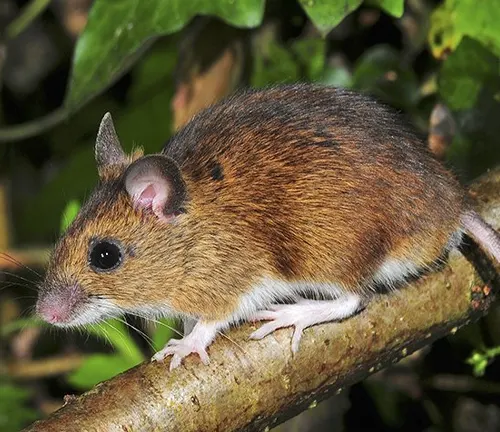
Peromyscus leucopus
(White-footed Mouse)
This species is found in North America and is known for its distinctive white feet. The White-footed Mouse is adaptable and can inhabit a variety of environments, including forests and fields.
Peromyscus californicus
(California Mouse)
Native to the western United States, the California Mouse is recognized for its stocky build and short tail. It prefers chaparral and woodland habitats.
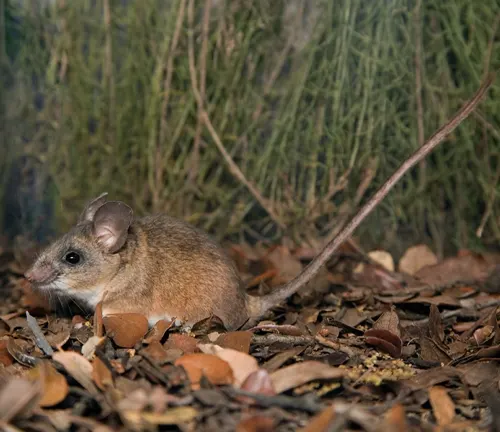
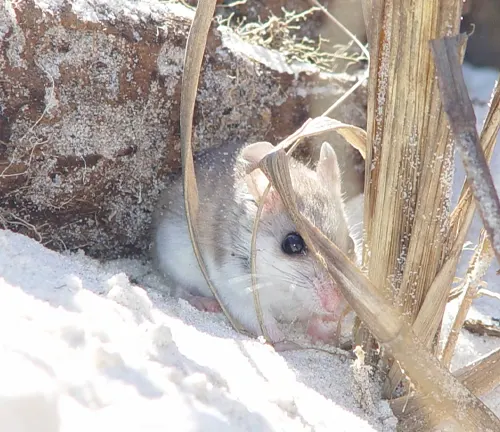
Peromyscus polionotus
(Oldfield Mouse)
Found in the southeastern United States, the Oldfield Mouse is adapted to various habitats, including pine forests and grasslands. It has a grayish-brown fur coat and a relatively long tail.
Peromyscus boylii
(Brush Mouse)
Inhabiting parts of western North America, the Brush Mouse is adapted to arid environments such as chaparral and scrublands. It has a relatively short tail and a buff-colored fur coat.
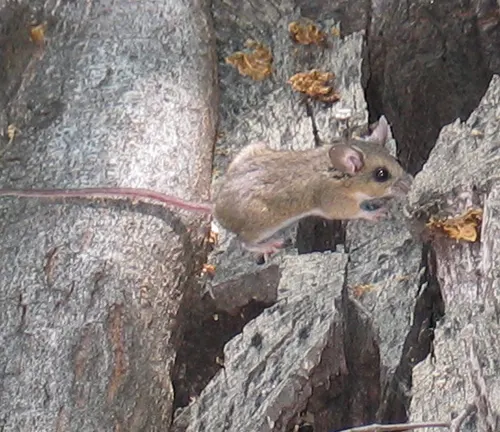
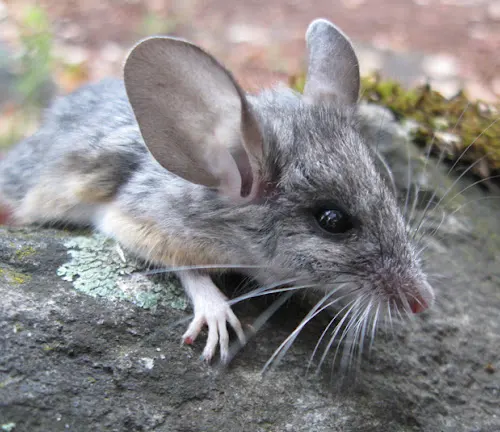
Peromyscus truei
(Pinyon Mouse)
Native to the western United States and Mexico, the Pinyon Mouse is adapted to arid and semi-arid environments. It is named for its association with pinyon pine forests.
Frequently Asked Questions (FAQs)
- What is an Eastern Deer Mouse?
This question seeks a basic definition and identification of the Eastern Deer Mouse, including its scientific name (Peromyscus maniculatus) and key characteristics. - Where is the Eastern Deer Mouse found?
Inquiring about the geographic range and distribution of Eastern Deer Mice, which spans North America from the Arctic Circle to the southern United States. - What does the Eastern Deer Mouse look like?
Describing the physical appearance of Eastern Deer Mice, including details about their size, fur coloration, distinctive tail, and facial features. - Are Eastern Deer Mice dangerous?
Addressing concerns about potential health risks associated with Eastern Deer Mice, especially their role in disease transmission, such as hantavirus. - How do you identify signs of Eastern Deer Mice in and around the home?
Providing information on recognizing evidence of Eastern Deer Mouse presence, such as droppings, gnaw marks, and potential nesting sites. - What habitats do Eastern Deer Mice prefer?
Explaining the adaptability of Eastern Deer Mice to various environments, from forests and grasslands to deserts, and describing their nesting and denning preferences. - How can I prevent Eastern Deer Mice from entering my home?
Offering advice on exclusion methods, sealing entry points, and implementing habitat modifications to discourage Eastern Deer Mice from entering human structures. - What diseases do Eastern Deer Mice carry?
Providing information on diseases associated with Eastern Deer Mice, particularly hantavirus, and offering guidance on minimizing health risks. - What is the legal status of Eastern Deer Mice?
Addressing questions related to wildlife conservation laws and regulations that may impact the handling or control of Eastern Deer Mice in specific regions. - What are effective control methods for managing Eastern Deer Mice?
Offering insights into various strategies, such as habitat modification, exclusion, repellents, and trapping, to control Eastern Deer Mouse populations and prevent damage. - Are Eastern Deer Mice beneficial to the ecosystem?
Discussing the ecological role of Eastern Deer Mice as both predators and prey and their contributions to ecosystem dynamics.


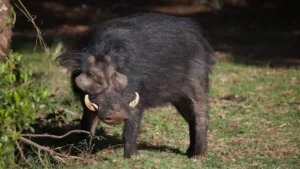



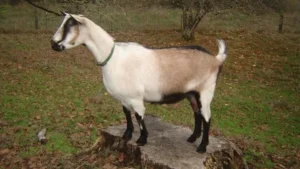



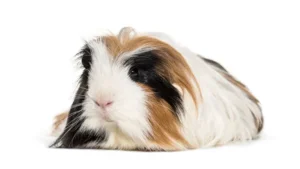
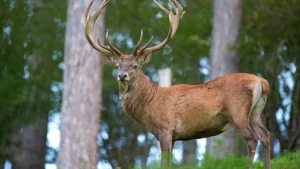


Leave your comment